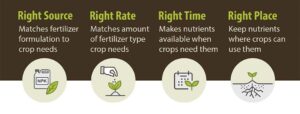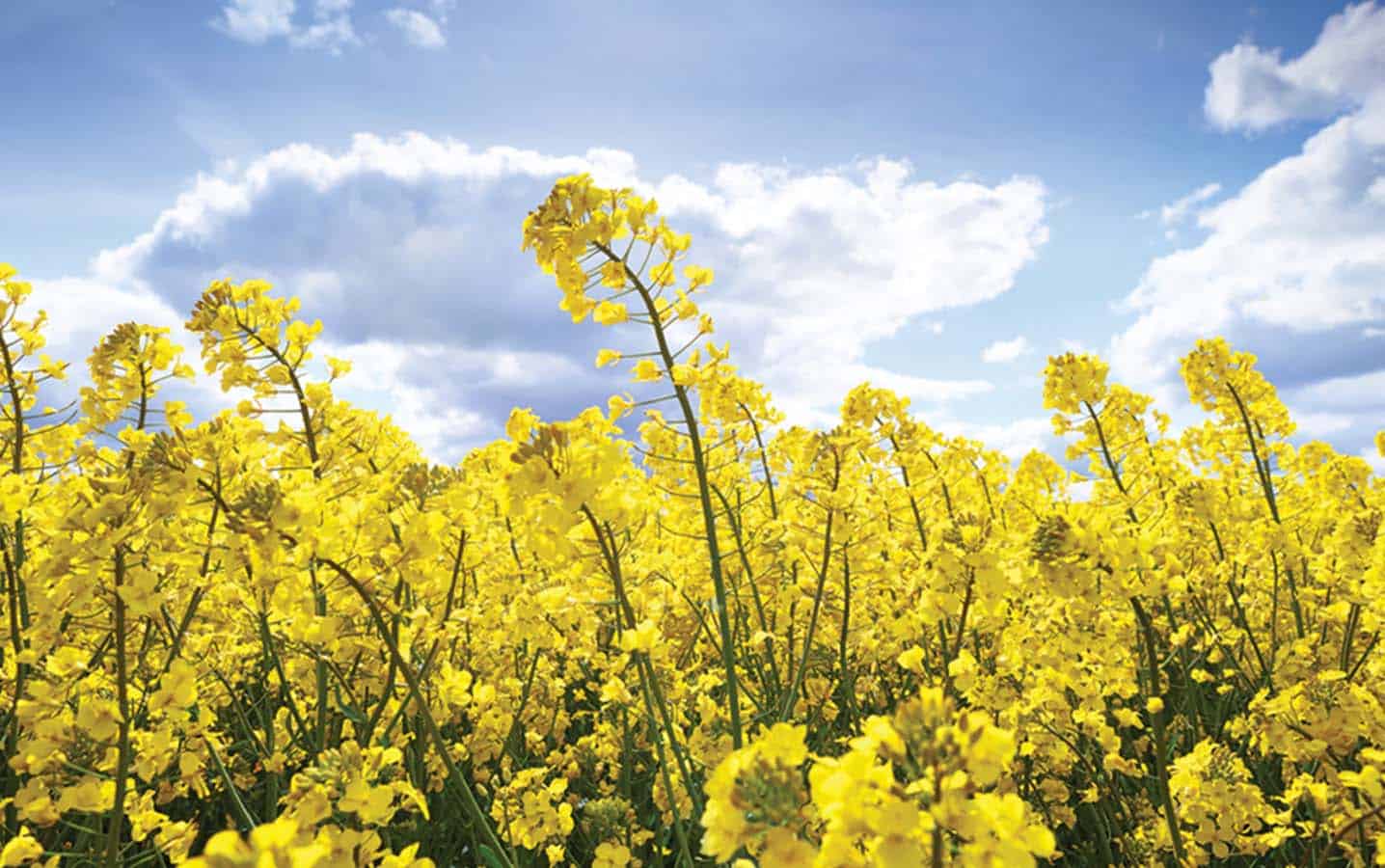5 CCC Agronomy Priorities for Canola
1. Use 4R nutrient management practices
All farms will benefit from applying the right fertilizer products at the right rate, right time and right place to improve yield, reduce losses and increase profits. A balanced crop nutrition plan applied at the right rate for each field or each zone within fields can improve economic and environmental sustainability of canola. Discover more science-based 4R practices at canolacouncil.org/4R.
Canola Council of Canada (CCC) agronomy specialists encourage farmers to use soil tests and set fertilizer rates based on soil test recommendations for their target yields. In the CCC grower survey from last winter, participants said fertilizer costs were a big barrier to profitability, and that probably hasn’t changed with higher fertilizer prices over the past few months. CCC fertilizer management messages are based on the 4R principles, which will help to improve nutrient use efficiency and return on investment from fertilizer.
2. Choose the best seed traits for each field
CCC agronomy specialists encourage farmers to make seed decisions based on the best traits for each field. This can include disease resistance, days to maturity, pod-shatter resistance and more. To weather-proof canola, choose cultivars that provide consistent high-yield performance in various conditions and pest scenarios. Use the tool at canolaperformancetrials.ca to compare cultivars.
Try new cultivars all the time. Seed companies provide excellent genetic solutions to many of the disease and harvest challenges, but those traits need proper stewardship to protect them. That means scouting. That also means rotation of genetic sources of resistance to help protect those valuable traits, including clubroot and blackleg resistance, from pathotype/race shifts within the field population.
 3. Achieve a uniform 5 to 8 plants per square foot
3. Achieve a uniform 5 to 8 plants per square foot
Two meta-analyses based on newer canola studies in Western Canada show that a stand with five to eight plants per square foot can maintain the yield potential of canola. Uniformity is also key. To reach maximum yield potential, a consistent and uniform plant stand across the entire field is required; furthermore, this will lead to consistent growth stage timing, which helps with pesticide application timing.
To set seeding rates that will achieve the target stand, use the calculators at canolacalculator.ca.
4. Identify and manage the top yield robbers
Canola growers can find all kinds of things in their fields. The key is to focus time and inputs on the most important yield loss factors. Scout regularly to see what pests, environmental factors or mechanical issues (seed placement, sprayer settings, etc.) cause the greatest loss for each field.
Participants in the CCC grower survey ranked flea beetles the pest of highest economic risk to canola in all regions. Sclerotinia stem rot was second everywhere except southwest Saskatchewan, which had herbicide-resistant weeds in second. The survey showed that top- yielding farmers are more likely to spray fungicide for sclerotinia stem rot. This makes logical sense, given that conditions favourable for sclerotinia are also favourable for higher yields. CCC agronomy specialists want to make it as easy as possible to make the right fungicide decision on every field, every year.
Find scouting and management tips for flea beetles, sclerotinia stem rot and all other major pests in the Diseases, Weeds and Insects chapters at canolaencyclopedia.ca.
5. Every seed is sacred: Deliver them all
The ideal is to deliver every seed at No.1 grade, and leave none behind. To do this, give all seeds time to mature, harvest with minimal losses and store canola without spoilage. The Harvest and Storage chapters at canolaencyclopedia.ca have tips for these objectives.
Grower survey results suggest that canola growers, in general, may achieve yield improvement through later swathing. The survey also showed that straight cutting is associated with higher yields for survey respondents who farm in the southwest Prairies.





